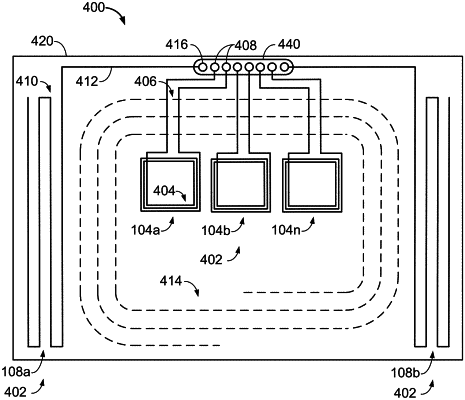|
1. An apparatus for detecting a presence of an object in a predetermined area of an inductive wireless power transfer system, the apparatus comprising: a first wire-wound structure that is electrically conductive, substantially planar, and configured for electromagnetically sensing of the object, wherein the first wire-wound structure comprises at least one piece of wire; a coil-former coupled to the first wire-wound structure, wherein the coil-former is substantially planar and has a first surface and a second surface opposite to the first surface, the coil-former configured to form a portion of the at least one piece of wire of the first wire-wound structure into a substantially two-dimensional wire-wound structure via first wire placement structures, wherein the substantially two-dimensional wire-wound structure comprises at least one single-wire lead line having a capacitance smaller than a capacitance of the substantially two-dimensional wire-wound structure, wherein the substantially two-dimensional wire-wound structure is configured to sense the object capacitively via an alternating electric field; form a second wire-wound structure via second wire placement structures, wherein the second wire-wound structure is configured to transfer power inductively; and hold in place the first wire-wound structure on the first surface and the second wire-wound structure on the second surface; and a detection circuit coupled to the first wire-wound structure and configured to: measure an electrical characteristic of the first wire-wound structure; and determine the presence of the object in response to a change in the electrical characteristic.
|
